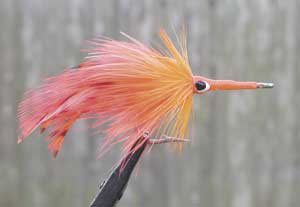
Coureurs de bois are a vanishing breed.
A few years back, the Contraband Fly Casters club of Lake Charles invited the legendary Stu Apte to be guest speaker at their annual conclave. If the name of Stu Apte doesn’t ring a bell, chances are you’re too young to remember the original American Sportsman television show, the one aired by ABC network and hosted by sports announcer Curt Gowdy. Apte was a recurring guest on this long-running, award-winning program.
In fact, the pilot for American Sportsman may have been an episode of ABC’s Wide World of Sports, which featured a tarpon contest with Apte and three other now-legendary saltwater fly-rodding pioneers: Joe Brooks, Jimmie Albright and A.J. McClane.
Today a fiberglass rod and a Pfleuger reel might be considered poor tackle to tame saltwater giants, but back in the early ’60s it was standard gear. The secret lay in the skill of the angler, a characteristic that we take for granted these days.
As important as skill was having the right fly. Today’s fish are far more educated than their forefathers were. Or at least we’re led to believe. That is the reason why the patterns we use now tend to more precisely “match the hatch” or exhibit undulating action that drives fish mad (e.g., the spoon fly).
But folks like Apte recognized the weakness of certain species for a particular shape or color. The flies they devised caught fish regularly back then, and remain with us today. Though largely ignored, if given the opportunity and put in the presence of fish, they can keep your rod bent and you happy.
One such fly is the Apte Tarpon Fly. At the Contraband Conclave, I won a box of these in a raffle. Since they weren’t tied by Apte himself, I felt O.K. soaking them in water.
Forget the tarpon label. The ATF has been one of my favorite redfish patterns the last two years. While not as consistent as spoon flies, it’s just a fun fly to fish, and catches more than enough reds.
Why fun? My scaled-down version is easy to cast with a 6-weight rod. Also, the fly itself is bright in the water. When a redfish flairs its gills, ready to eat, you’ll see this fly one instant and the next instant disappear.
If you’re concerned about grass or oysters, you can tie on a weed guard. But for fishing canals and small lakes where the ATF works best, it’s really not needed.
MATERIALS:
• Hook — stainless steel size 1, Mustad 34011 or similar
• Thread — red or fire orange
• Tail — four saddle hackles, two yellow or brown, two red
• Body — marabou and hackle mixed colors
• Eye — thread wrapped to eye, then painted on
DIRECTIONS:
Select two hackles from each color set, and match the different colors into pairs. Tie one pair in above the hook point of the hook, such that the feathers bend out, with two wraps of thread. Then tie in the second pair again with the feathers bent out, and secure with several wraps.
Tie in a small tuff of marabou that closely matches the colors of the feathers, and palmer the marabou, stroking it back. Tie in a pair of hackles, and palmer these with three to four wraps just in front of the marabou. Secure with thread, and clip the rest off. Stroke back the fibers, and wrap the base of the palmer to force it backward a bit.
Now build up a base of thread just above the feathers, where you will paint on an eye. Then wrap thread up to the hook eye and knot off. I like to use nail polish to paint on eyes, using a 5-centimeter dowel for white and 3-centimeter dowel for black.
Upcoming Events
Paddlecraft fishing is the fastest-growing segment of the outdoors industry, and is especially popular among fly rodders. On Saturday, May 6, Backpacker of Baton Rouge will host a “Paddle Demo Day” at University Lake in Baton Rouge on Stanford Avenue from 10 a.m. to 3 p.m. More than 50 boats will be available to try out, and representatives from Ocean Kayak, Old Town, Wilderness Systems, Dagger, Perception and Mad River will be on hand to answer questions.
On Saturday, May 13, the Red Stick Fly Fishers will hold their annual “Fly Fishing 101” clinic at Wildlife and Fisheries’ Waddill Education Center, 4142 North Flannery Road in Baton Rouge. Time is from 8:30 a.m. to 3 p.m., and session topics include equipment, casting, leaders, knots, presentation tactics and fly tying. Lunch and refreshments are included. There is no cost for this event, but prior registration is required as space is limited. For more details, check the rsff.org web site or contact Jody Titone at (225) 381-3167 or email at jpt@bswllp.com.
On Saturday, June 24, Uptown Angler fly shop will host Carey Marcus of Sage Rods for a demo day at Lafreniere Park in Metairie. Time is from 12 noon to 4 p.m. There will be casting demonstrations and instruction, featuring the new electronic Sage Casting Analyzer we detailed in the December issue of this column. Uptown Angler will provide food and refreshments, and raffle off one of the new Sage fly rods. For more info, contact Alec at 800-974-8473.


